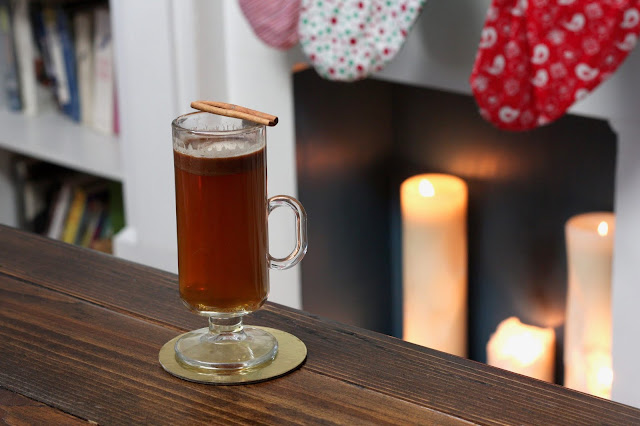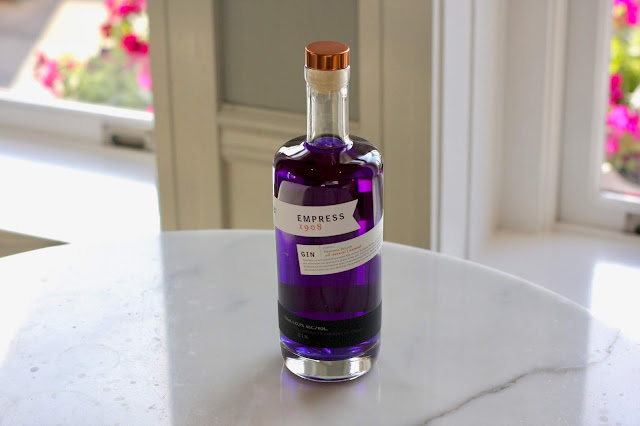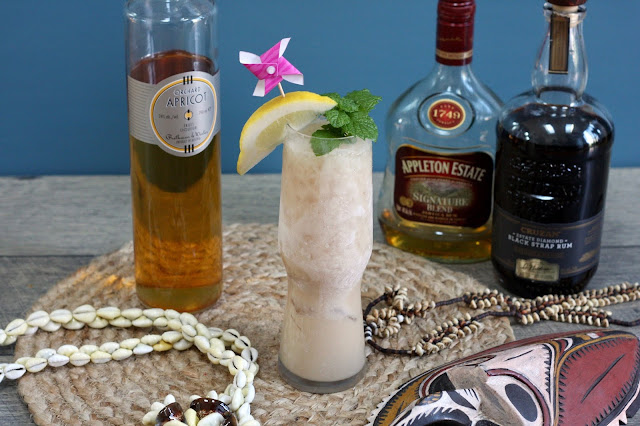I can trace my love affair with cocktails back to a single evening. I had just found out that I had gotten a competitive NSF fellowship to support me during graduate school, and my husband and I were going to celebrate. Earlier that week I had picked up a copy of one of those free magazines that used to be all over - I think it was
Stuff at Night - and they had a feature on the best cocktail bars in Boston. In my mind there wasn't really anything fancier than sitting at a marble-topped bar and sipping a beautiful drink, so we went to one of the places on the list,
Eastern Standard. I don't remember what the magazine said that made us pick Eastern Standard, but I do remember the cocktail they featured: the Periodista, a rum drink made with lime juice and apricot and orange liqueurs.
I don't know why the Periodista in that article stuck in my head. I didn't even order it that night - I ended up getting an Aviation, my first one ever, and realizing that there was so much more to cocktails than I had ever known. But I distinctly remember the orangey cocktail pictured in that magazine. I later tried one elsewhere in Boston and found it to be quite as tasty as
Stuff at Night made it out to be. Little did I know that the Periodista is a drink with a story behind it.
The Periodista (Spanish for "journalist") is a happy, crowd-pleasing cocktail. Its flavor is bright and citrusy, with tart lime and sweet apricot playing against each other on your tongue. It's like a Daiquiri with a few extra tricks up its sleeve. It's somehow simultaneously perfect for drinking on a tropical beach or in a Boston dive bar in the dead of winter. It's not hard to see why it became so popular here. It's the
how that is a bit more convoluted. If you're curious, read on.
History: I could just tell you what is known about the history of the Periodista, but I would be doing you a disservice. Because if you're at all interested in craft cocktails, the people who make them, and the stories behind them, you should read Devin Hahn's
Periodista Tales.
Briefly, Devin Hahn is a writer and filmmaker who lives in Boston. He also enjoys a good craft cocktail. In particular, he became a fan of the Periodista after having one at Chez Henri, a now-shuttered French-Cuban restaurant in Cambridge, in 2007. The menu there indicated that the cocktail originated in Cuba, and was a favorite of Ernest Hemingway. An instant fan, Hahn began ordering Periodistas at bars all over Boston, and bartenders were happy to make him one. This was, in fact, right around the same time that I made my pilgrimage to Eastern Standard and learned about the drink myself. It was not a hard cocktail to find.
Unless, apparently, you left Boston. When Hahn traveled out of the city, no one seemed to have even heard of Periodista. Bartenders at places like
PDT in New York and
The Varnish in Los Angeles had no idea what he was talking about. And Hahn couldn't find the recipe online or in any cocktail books.
So in 2010, Hahn set out on an epic quest to uncover the origins of the Periodista that he chronicled online in the
Periodista Tales. It takes him to some of Boston's most beloved watering holes and introduces a cast of characters that I've come to know well as a cocktail lover in the city - people like Jackson Cannon, John Gersten, and Misty Kalkofen. And then Hahn's search expands, and he meets with luminaries like David Wondrich and Ted Haigh, who share their own stories and insights into the craft cocktail renaissance. It becomes a rumination on the craft of bartending itself, as well as a perfect example of how difficult it can be to find out the real story behind a cocktail.
The only thing wrong with it is that it seems to end prematurely. The last installment from 2011 reads like a cliffhanger. I don't know if Hahn has continued his research since, but I hope he updates us at some point.
If you're short on time and really just itching to get to the punchline (the Periodista Tales is a lengthy read), I will spoil the results of Hahn's research here. The real origin of the Periodista remains unknown, but it
does seem to hail from Cuba. The earliest mention of the recipe in print that Hahn could find is from 1948, buried at the back of
El Arte de Cantinera, a bartenders' manual from the
Club de Cantineros de la Republica de Cuba in Havana.
The Periodista came to Boston when Paul O'Connell and Joe McGuirk were building Chez Henri's cocktail list. They found the recipe in a "little tropical cocktail book," one of those pamphlets that spirits brands used to print. Like
El Arte de Cantinera, it called for white rum, but they found it far better with Myer's dark rum. It ended up on the menu. From there, McGuirk took the recipe to the B-Side Lounge, one of Boston's most (in)famous cocktail bars, where many of the greats got their start. As they left to begin their own ventures, they took the Periodista with them. And the rest, as they say, is history.
In his account, Hahn includes the Periodista recipes from many of the bars and bartenders that he interviews - a dozen in all, from the B-Side Lounge's version (which specifically calls for "generic bottom shelf" apricot liqueur and triple sec) to
Drink's recipe with house-made lime peel syrup. The one that appealed to me most was Brother Cleve's recipe, which uses Appleton Estate Jamaican rum and included a bit of simple syrup to make the drink less tart. The result, in my opinion, is perfection. But if it doesn't suit your fancy, try adjusting the ratios or checking out some of the other recipes.
Periodista
1 1/2 oz. Appleton Estate aged rum (12- or 21-year recommended, I used Signature Blend)
3/4 oz. apricot liqueur (Rothman & Winter)
1/2 oz. Cointreau
1/2 oz. lime juice
1 barspoon (1/8 tsp) simple syrup
Combine all ingredients in a shaker with ice and shake until chilled. Strain into a coupe and garnish with a lime wheel.
Recipe from Brother Cleve via Devin Hahn.






















































